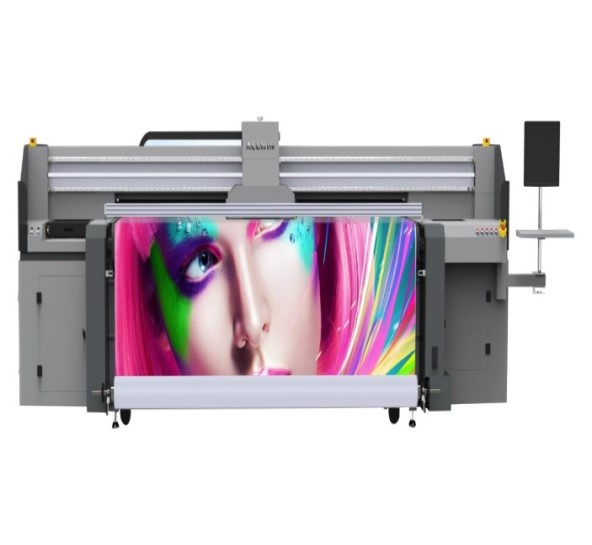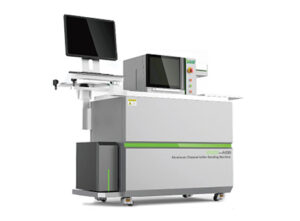What is a UV Hybrid Printer and Why You Need One?
If you are looking for a versatile and cost-effective printing solution that can handle both flatbed and roll-to-roll materials, you might want to consider a UV hybrid printer. A UV hybrid printer is a type of digital printer that uses UV LED curing technology to print on a wide range of substrates, from rigid boards to flexible banners. In this blog post, we will explain what a UV hybrid printer is, how it works, and what are its benefits and applications.
What is a UV Hybrid Printer?
A UV hybrid printer is a printer that combines the features of a flatbed printer and a roll-to-roll printer. A flatbed printer is a printer that prints directly on rigid or semi-rigid materials, such as wood, glass, acrylic, metal, etc. A roll-to-roll printer is a printer that prints on flexible materials that come in rolls, such as vinyl, canvas, paper, fabric, etc.
A UV hybrid printer can switch between flatbed and roll-to-roll modes depending on the type of material being printed. It has a movable carriage that holds the print heads and a vacuum table that holds the material in place. When printing on rigid materials, the carriage moves over the stationary material on the table. When printing on flexible materials, the carriage remains fixed while the material is fed through the rollers.
A UV hybrid printer uses UV LED curing technology to dry the ink instantly after it is deposited on the material. UV LED curing technology uses light-emitting diodes (LEDs) to emit ultraviolet (UV) light that activates a chemical reaction in the ink, turning it from liquid to solid. This process eliminates the need for heating or drying devices, which reduces energy consumption and environmental impact.
How Does a UV Hybrid Printer Work?
A UV hybrid printer works by spraying tiny droplets of ink onto the material using piezoelectric print heads. The print heads have hundreds or thousands of nozzles that can be controlled individually to create high-resolution images with precise color and detail. The ink used by a UV hybrid printer is specially formulated to be cured by UV light. The ink contains photoinitiators that react with the UV light and form cross-links between the ink molecules, creating a durable and flexible layer of ink on the material.
The UV light is emitted by LEDs that are mounted on the carriage or on the sides of the printer. The LEDs have a long lifespan and low power consumption compared to traditional mercury lamps. The LEDs also produce less heat and ozone, which improves the safety and comfort of the operator and the environment.
The advantages of using UV LED curing technology are:
Faster printing speed: The ink dries instantly after being exposed to UV light, allowing for faster printing and finishing.
Wider range of substrates: The ink can adhere to almost any material, regardless of its shape, size, or texture.
Higher quality output: The ink does not spread or bleed on the material, resulting in sharper images with vibrant colors and smooth gradients.
Lower operating costs: The LEDs consume less energy and require less maintenance than mercury lamps. The ink also has a longer shelf life and does not clog the print heads.
Eco-friendly printing: The ink does not contain volatile organic compounds (VOCs) or hazardous substances that can harm human health or the environment.
What are the Benefits and Applications of a UV Hybrid Printer?
A UV hybrid printer offers many benefits for different types of printing businesses and applications. Some of these benefits are:
Versatility: A UV hybrid printer can print on both flatbed and roll-to-roll materials, expanding the range of products and services that can be offered to customers.
Productivity: A UV hybrid printer can print faster and more efficiently than separate flatbed and roll-to-roll printers, reducing labor costs and increasing output.
Quality: A UV hybrid printer can produce high-quality prints with excellent adhesion, scratch resistance, water resistance, and color stability.
Creativity: A UV hybrid printer can print on various materials with different effects, such as white ink, varnish, embossing, etc., creating unique and eye-catching prints.
Sustainability: A UV hybrid printer can reduce energy consumption and environmental impact by using LED curing technology and eco-friendly ink.
Some of the applications that can be done with a UV hybrid printer are:
Signage: A UV hybrid printer can print on various materials for indoor and outdoor signage, such as acrylic boards, aluminum composite panels, corrugated cardboard, PVC boards, vinyl banners, etc.
Decoration: A UV hybrid printer can print on various materials for interior and exterior decoration, such as wood panels, glass panels, ceramic tiles, wallpaper, fabric, etc.
Packaging: A UV hybrid printer can print on various materials for packaging products, such as paperboard boxes, plastic containers, metal cans, etc.
Industrial: A UV hybrid printer can print on various materials for industrial applications, such as metal plates, plastic parts, electronic components, etc.
Where to Buy a UV Hybrid Printer?
If you are interested in buying a UV hybrid printer, you might want to check out some of the leading manufacturers and suppliers of UV hybrid printers in the market. Here are some of them:



